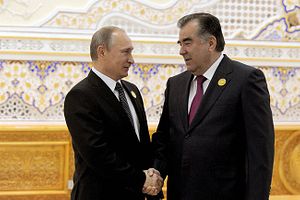Now that Central Asia’s holiday season has largely wound up, regional analysts can begin developing a firmer idea of what form the fallout from Russia’s economic slowdown will take. And if early returns are any indication, there seems to be little room for fiscal optimism within the region – especially as it pertains to those nations relying most heavily on migrant remittances from Russia.
Both Tajikistan and Kyrgyzstan rely on remittances as their primary economic bulwarks, with the former as the worldwide leader in remittance-to-GDP ratios. Both stand to suffer the most as remittances begin to falter. Tajikistan has already seen rates tumble some 20 percent from the previous high, and growing anecdotal evidence suggests that Kyrgyzstani villages have begun to see remittances disappear. Mukhammed Amin, the head of the Federation of Migrants of Russia, had said that at least 2.5 million migrants will leave Russia in the near future, with other observers pegging the departure rate at nearly 25 percent.
A new report from Agence France-Presse helps confirm some of these early indications. As the head of one Russian street cleaning company noted, some 30 percent of Central Asians have not returned to Russia since the 2014 departure. A Tajikistani immigration office, meanwhile, said that the current rate of nationals heading to Russia is half that of the 2014 rate. According to a representative from an organization aiding migrant laborers, “There’s no point in working [in Russia] if that means they can’t send money back to their families.”
Again, it will be some time before the full ramifications within Russia’s economic crunch are understood. But the picture is becoming clearer. As is the likelihood that Dushanbe and Bishkek – and Tashkent, to a lesser extent – have no clear line of reprieve for those returning jobless. As the AFP reported, “The Tajik government has vowed to create 200,000 jobs this year[.]” Where these jobs will be, and who will pay for them, remains unclear.
The numbers of migrant laborers returning will be one of the key indicators in the region through the first half of 2015. Large chunks of laborers may yet remain hunkered in Russia, waiting out the recession. (Whether they’re willing to wait years, however, remains to be seen.) Some may uproot for Turkey or the Gulf. Many, however, will return in Tajikistan and Kyrgyzstan, without pay, without prospect. Considering the already brittle welfare structures and political regimes in both, the ramifications of Russia’s economic fallout look far more combustible than Dushanbe and Bishkek would otherwise be comfortable with.
































